While nostalgia has a way of glossing over the shortcomings, rough edges and general low points of a given event, it persists as a phenomenon for a reason. Some experiences are simply so unique, so formative that they cannot be surpassed and compel folks to reminisce and use them as measuring sticks, of sorts, for all comparable experiences to come.
Gamers are no different. While we may be more fortunate insofar as we can boot-up any past game any time we feel like it, reproducing the setting we first experienced it in – our mindset, past circumstances or expectations – is, of course, impossible. Like everyone else, our experiences are always viewed through the prism of our current state of mind.
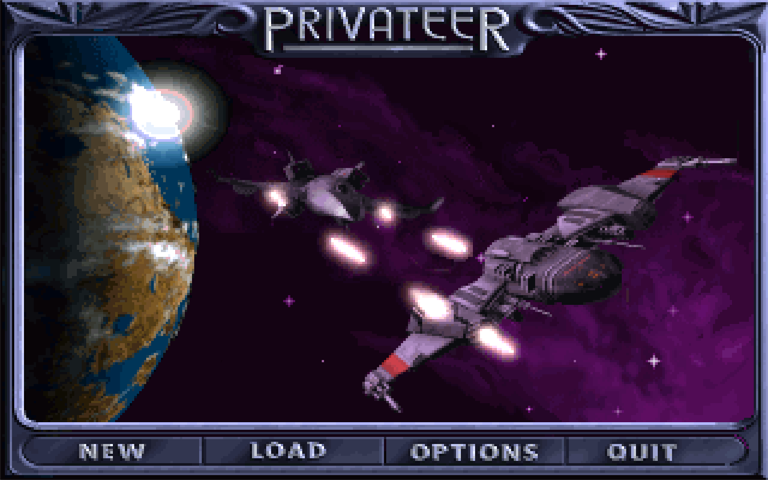
But while we cannot recreate the circumstances of initial exposure, every now and again, a game comes along that renders such exercise moot. A game which is so well constructed and so timeless as to actually do nostalgia justice... And Wing Commander: Privateer is one such game.
Made by Origin Systems back in 1993, Privateer was, at the same time, straightforward and revolutionary. Straightforward, because it used the same raster graphics, SoundBlaster tunes and lore as the previous two Wing Commander titles; and revolutionary because it took a hard turn away from the more colorful, cartoonish style of its enlisted predecessors towards a seedier, more realistic delve into the life of a self-employed spacer.
In the game, you play the titular privateer (whose name, Grayson Burrows, I only found out today, doing research for this review): a freelance ship captain who inherited an aging Tarsus freighter from his grandfather and set out to make some credits.
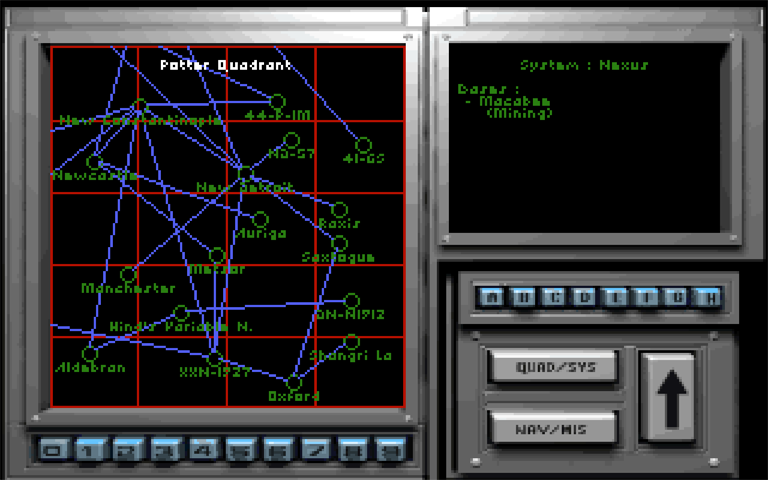
The main radical feature Privateer offered was the freedom to do as you please. Unlike its predecessors, it did not lead you by the ear, one mission to the next. Rather, it gave you a crappy little ship, some loose change and 4 quadrants (with 70 systems total) and said "there you go."
While the game had a main plot line you could eventually discover and undertake, it had no interest in handholding or railroading. If you were so inclined, you could just take random missions, trade between systems, or rob unwitting merchants and generally tweak your snout at the police and the Confed armada. Together with Frontier: Elite II, which released a month later, Privateer was the first true space sandbox.
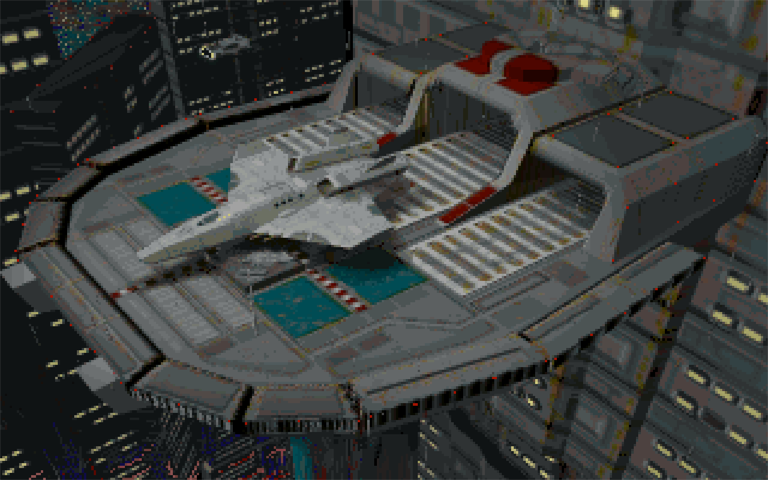
The 70 systems were populated with bases you could dock at (agricultural, pleasure, mining, refinery and pirate) and four unique locations (industrial New Detroit, with its strong Blade Runner vibes; New Constantinople, Gemini sector's seat of government; Oxford, the planetwide university; and Perry Naval Base, where the Terran Confederation's fleet liked to hang out).
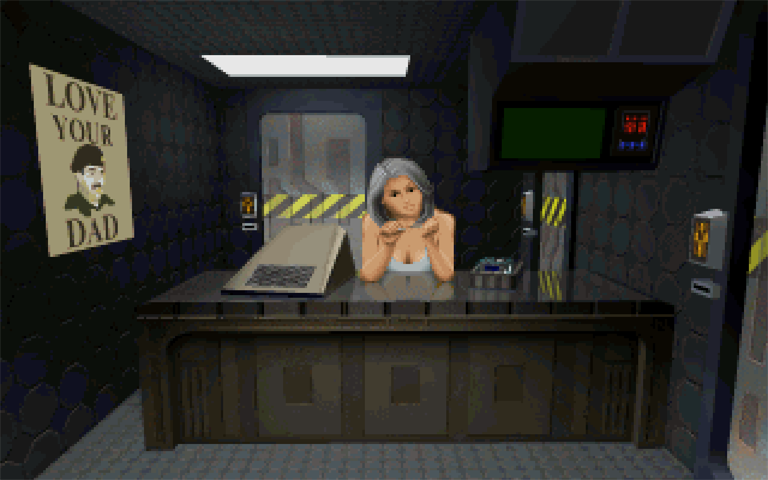
Each base offered a mission kiosk, where you could undertake random assignments for money, and two guilds (Mercenary and Merchant), which offered better paying missions, but required you to pay membership dues first.
Commodity traders let you buy and sell goods, ship merchants allowed you to upgrade your aging Tarsus to one of three playable ships (the ponderous Orion – a poory armed tank; the expansive Galaxy – a trader's dream; and the sleek and deadly Centurion – with the largest armament in the game); the equipment hangar and software kiosk let you, respectively, kit out your ship and upgrade its navigation system (including the purchase of a map for a given sector).
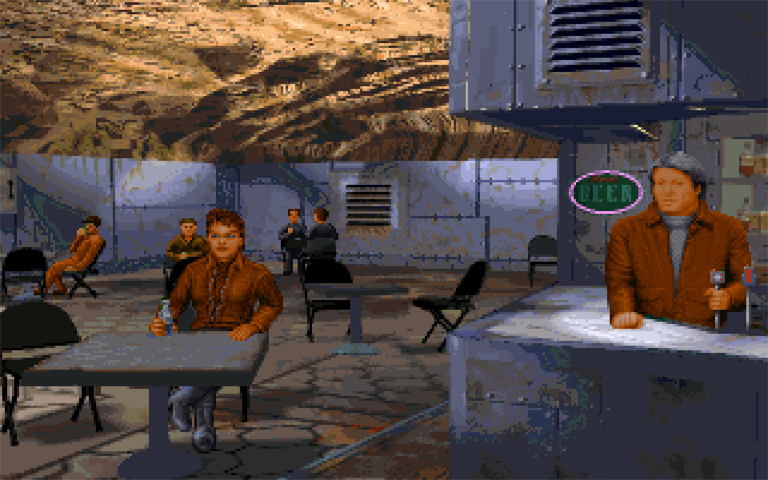
Each base also came with a bar, where you could listen to some (largely useless) gossip, or run into one of the people responsible for unraveling the game's main plot (though only in sequence, after first finishing the prerequisite missions).
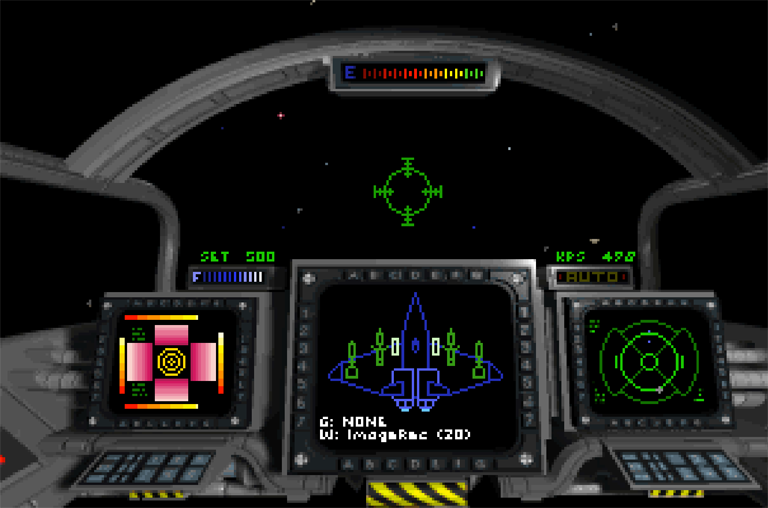
Once you had everything you needed and set out into the black, flying was largely unchanged from Wing Commander days: armor, shields, guns, missiles, torpedoes; picking up salvage with tractor beams; using autopilot to skip nav points and jump points to shift between systems. Flying also largely revolved around combat, as four of the game's seven factions were initially hostile and only the Centurion (which you couldn't afford until late) had a snowball's chance in hell of outrunning a fight.
With all my gushing, was Privateer perfect? Of course not. No such game exists.

The writing was utilitarian and bland, the dialogue — cartoonish. The only way to change a faction's attitude towards you was to shoot enough of their enemies to make them friendly (which, in turn, made that faction your enemy). And with a limited ship roster and only fighting or trading to engage in, the game didn't exactly overflow with activities.
But what it did have was that good old Origin Systems flair. Privateer oozed style and atmosphere, with fantastic, hand-drawn, hand-animated graphics, inspired ship and station design and a plot that bounced you all over the Gemini sector, from one shady character to the next.
Privateer's core design was so solid, in fact, that devs have been trying to replicate it since (albeit without much success). Erin Roberts tried it with the odd Privateer 2: The Darkening, which was a flop despite starring Clive Owen (!), Jurgen Prochnow (!!), Christopher Walken (!!!) and the late, great Sir John Hurt (we have officially run out of exclamation points). Chris Roberts followed up with the oddly stilted Freelancer (awful single player campaign, awesome LAN multiplayer). Double Damage's Rebel Galaxy: Outlaw underperformed despite liberally copying all of its core features. And Chris Roberts (again), perhaps jilted by having failed with Freelancer, has gone on a 563 million USD binge with his Star Citizen, which has yet to get a release date despite being in development for, oh, you know — 13 years!
More than the X series, more than the circumscribed DarkStar One, the boastful Elite: Dangerous or the ridiculously overindulgent EVE Online, little old Wing Commander: Privateer is what people keep coming back to for the simple reason that it was a good idea well realized. A good idea no one has been able to meaningfully improve.
If you like space sandbox games and wonder where they came from, enjoy good design and great artwork, want to experience a bit of gaming history in action, or merely want to wink at a Militia Talon as its scan fails to pick up the brilliance stashed away in your concealed hold, give Privateer a try. It might not have the plethora of Things To Do of modern games offer, but no modern game can match it for atmosphere and design.
Pig Recommends:
- -realizing that, in its heyday, Origin Systems was a one-stop-shop for some pretty amazing titles; between the Ultima series, Wing Commander, ShadowCaster, Strike Commander, System Shock, Bio Forge, Crusader: No Remorse and CyberMage, what started out as four guys in a garage went on to become a development powerhouse staffing more than 300 people, which put out some of the 90's and early 00's most iconic games; and while, nowadays, some of the titles can be hard to find, running them is a breeze with DOSBox and GoG has a fair few on its roster; if you feel like a traipse down nostalgia lane, I would highly recommend Crusader for its bleak worldview, solid story and action, Strike Commander for running your own mercenary squadron and Bio Forge for a harrowing/beautiful/bit sad story with some really neat set pieces and concepts;
